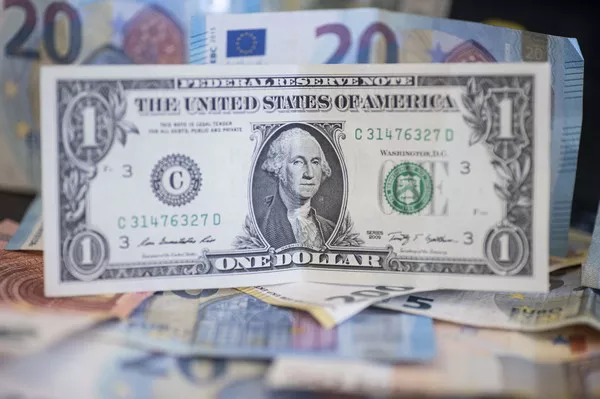The $2 bill holds a unique place in the history of United States currency. While it may not be as commonly seen in circulation as other denominations, the $2 bill has a fascinating past and continues to intrigue collectors and history enthusiasts alike. In this article, we will delve into the history of the $2 bill, explore its significance, and unveil the oldest $2 bill known to exist.
The Origin of the $2 Bill
The $2 bill was first introduced in the United States during the Civil War era in 1862. As a result of the rapidly changing economic conditions brought about by the war, the federal government sought new ways to finance its operations and stabilize the monetary system. The issuance of the $2 bill was part of the Legal Tender Act of 1862, which authorized the government to issue paper money as legal tender, not backed by precious metals.
Early Designs and Engravings
The earliest $2 bills featured intricate engravings and designs typical of the era. The front of the bill displayed the portrait of Alexander Hamilton, the first Secretary of the Treasury and one of the founding fathers of the United States. On the back, the bill showcased a vignette titled “The Landing of the Pilgrims,” depicting the arrival of the Mayflower pilgrims in Plymouth, Massachusetts.
The Series of 1896 Educational $2 BillAmong the oldest and most iconic $2 bills is the Series of 1896 Educational $2 bill. This series is highly sought after by collectors and historians due to its distinctive design and historical significance. The front of the bill features a portrait of Thomas Jefferson, the third President of the United States and author of the Declaration of Independence.
The “Educational Series” Design
The “Educational Series” design was introduced in 1896 as part of an effort to modernize U.S. currency. It was the first time that the $2 bill deviated from the traditional portrait-style engraving. Instead, the bill showcased elaborate allegorical motifs that represented various aspects of education and progress.
Symbols of Learning and Enlightenment
The Series of 1896 Educational $2 bill boasts intricate vignettes that symbolize learning, enlightenment, and the progress of civilization. One notable vignette portrays “Science Presenting Steam and Electricity to Commerce and Manufacture.” Another vignette illustrates “Electricity as the Dominant Force in the World,” depicting the power of electricity in shaping modern society.
The Importance of Condition
As with all collectible currency, the condition of the $2 bill significantly affects its value. Collectors and appraisers consider factors such as the bill’s paper quality, ink clarity, absence of tears, and overall preservation. An exceptionally well-preserved Series of 1896 Educational $2 bill can command a higher value in the collector’s market.
Rarity and Scarcity
The Series of 1896 Educational $2 bill is considered rare and scarce, adding to its appeal among collectors. Due to the limited number of bills produced and their age, finding well-preserved examples in circulation can be challenging.
Red Seal vs. Green Seal
One distinction among older $2 bills is the color of the seal. The Series of 1896 Educational $2 bill features a distinctive red seal, which was later changed to green in subsequent designs. The red seal adds to the visual allure and historical significance of the bill.
Preservation and Collecting
Preserving and collecting historical $2 bills, especially those from the Series of 1896, require proper care and storage. Collectors often use protective sleeves or display frames to safeguard these valuable and delicate pieces of history.
The Fate of the Series of 1896 Educational $2 Bill
While the Series of 1896 Educational $2 bill is no longer in circulation, examples of this historic bill are still in existence and are highly prized by collectors. The bill’s unique design and historical relevance make it a coveted addition to any numismatic collection.
The Legacy of the $2 Bill
Throughout the years, the $2 bill has faced periods of reduced production and circulation. Despite this, it remains an essential part of U.S. currency and carries a special cultural significance. Many people view the $2 bill as a symbol of luck and good fortune, and it is often given as a token of appreciation or as a keepsake.
Modern $2 Bill Designs
In recent years, the $2 bill has continued to be printed in smaller quantities and is generally less common in everyday transactions. The modern $2 bill features a portrait of Thomas Jefferson on the front and a depiction of the signing of the Declaration of Independence on the back.
Collectible Currency Market
The world of collectible currency, including the $2 bill, has a vibrant and active market. Rare and historic bills can fetch substantial prices at auctions and through private sales. The allure of owning a piece of history, combined with the scarcity and uniqueness of certain bills, contributes to their value and desirability among collectors.
Conclusion
The $2 bill holds a treasured place in American history, from its introduction during the Civil War era to its iconic designs, such as the Series of 1896 Educational $2 bill. While no longer commonly seen in circulation, the $2 bill continues to captivate collectors and history enthusiasts alike. The rare and exceptional Series of 1896 Educational $2 bill stands as a testament to the beauty, artistry, and historical significance of U.S. currency. As we continue to embrace modern forms of payment, the $2 bill serves as a tangible reminder of the nation’s rich heritage and the enduring fascination with collectible currency.


